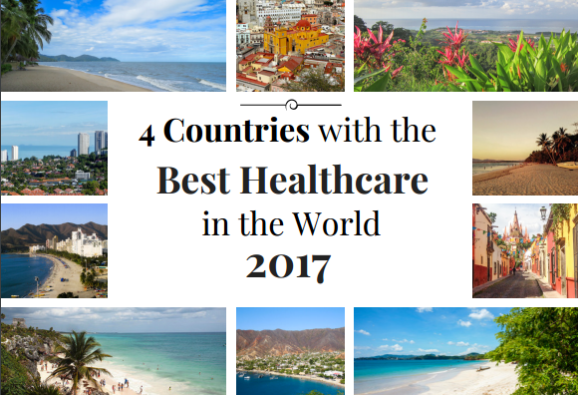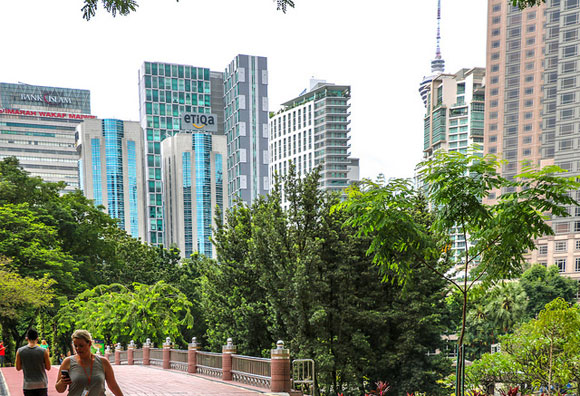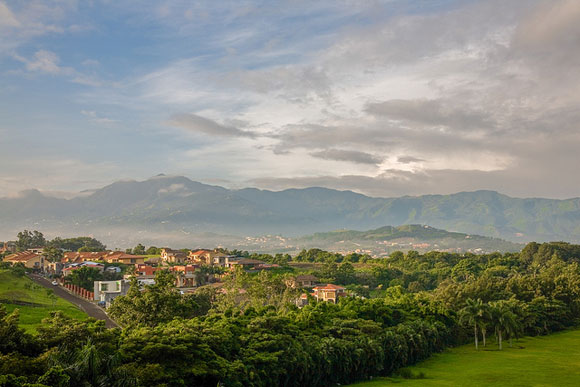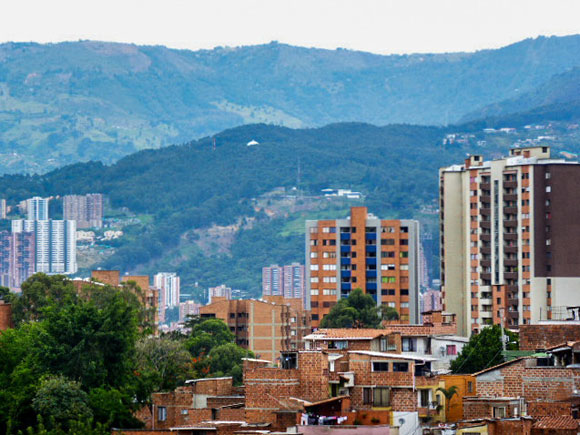4 Countries With The Best Healthcare In The World

One of the main concerns of any person looking to retire overseas is the quality of healthcare. Is it possible to get medical treatment as good as what’s available in the U.S. and Canada? The answer…a resounding yes. Sometimes it’s even better than what’s on offer at home, and at a more affordable price too.
Measuring the quality of healthcare is difficult, and it’s hard to put a number on it. We can, however, put a number on the price of medical procedures. And these costs (as well as quality) helped us score each of the 24 countries in the healthcare category of International Living’s 2017 Global Retirement Index.
Read on to learn more about the top four countries in the world for healthcare. In each of these countries you’ll find clean, excellent hospitals, highly trained doctors, and very affordable care.
1. Malaysia: Medical Tourism is Booming

A stronger U.S. dollar, cheaper air travel, mounting healthcare costs in Western countries (and long waiting lists), have all contributed to the Malaysian medical tourism boom in the past decade. Medical tourists arriving in Malaysia have increased on average by 100% in the last five years.
George Town and Kuala Lumpur are the main two medical centers in Malaysia, and both cities are serviced by a multitude of international airlines from around the world.
Malaysia has some of the best-trained doctors in Asia–and the majority of them were trained in the U.S., Australia, or the UK. All of them speak English too, and that takes a lot of the stress away from what is already a stressful situation.
Western accreditation is also a vital component for confidence in undergoing foreign medical treatments. Numerous hospitals in Penang and Kuala Lumpur are among Southeast Asia’s first recipients of the United States’ prestigious Joint Commission International (JCI) certification. Seen as the gold standard for healthcare service providers around the world, Malaysia has no less than eight JCI-accredited hospitals.
That being said, there are also some very good “not for profit” hospitals here too. One of best is The Lam Wah Ee Hospital in Penang. I’ve had two operations there, and I can’t say enough about their professionalism.
The most popular areas of treatment across the board in Malaysia include cosmetic surgery, dental work, and dermatology. In 2016 Malaysia was visited by more than 1 million medical tourists from around the globe, a figure that is certain to rise in 2017.
Other considerations to take into account are that there is little to no waiting time when you arrive. It’s as simple as registering at the hospital of your choice and then waiting for that particular specialist to see you. You also don’t need to be referred to that particular specialist by a General Practitioner. – Keith Hockton
2. Costa Rica: Low-Cost, High-Quality Healthcare

More than 40,000 Americans travel each year to Costa Rica to seek medical and dental treatment. These “medical tourists” have discovered that this little Central American country has high quality healthcare available at a very low cost.
And expats who live in Costa Rica are able to take advantage of this benefit every day of the year, paying a fraction of what they did back home for doctor’s visits, surgeries, prescriptions, and any other care they need.
There are two medical systems in Costa Rica, with expats allowed to access both.
First is the Caja Costarricense de Seguro Social, known as Caja for short. This is universal healthcare, provided and managed by the government. It’s available to citizens and legal residents, including foreigners with the pensionado visa, for example.
As part of Caja, you pay a monthly fee based on the income you reported on your residence application, 6% to 12%. This covers the applicant and a dependent spouse, with the average fee running from $75 to $150 per couple.
After you pay your monthly fee, all your care is covered. Doctor’s visits (including specialists), diagnostic testing, prescriptions, surgeries…everything. And there are no exclusions for age or pre-existing conditions. Most expats say the Caja provides good care, although there can be issues with wait times for doctor’s visits and non-emergency procedures. The system has an emphasis on preventative care.
There is also an extensive private medical system in Costa Rica, with doctors, clinics, and hospitals throughout the country. You can pay cash to see private providers, but it’s still cheap. A doctor’s visit is $50; you’ll pay $80 to $100 to see a specialist. An ultrasound will run you about $75. And even major surgeries are cheap, about half to a quarter of the cost in the U.S.
You can also use insurance, either international policies or those provided by Costa Rican companies. Most private hospitals have international patient departments to help you arrange financial matters.
Often expats mix and match private and public medical care. They might see a private doctor and pay cash and then have their prescription filled in the Caja pharmacy for free. Or if a procedure is taking too long to schedule at a public clinic, they might go private.
Something to keep in mind: although there are well-regarded facilities throughout the country, the best hospitals and most specialists in both the public and private system are in San José, Costa Rica’s capital. So if you have a serious medical issue, you will likely have to travel there to seek treatment. – Jason Holland
Get Your Free Report on the World’s Best Places to Retire:
Learn more about the best places in the world to retire in our daily postcard e-letter.
Simply enter your email address below to sign up for our free daily postcards and we’ll also send you a FREE report on The World’s Top 10 Retirement Havens.
3. Colombia: Where Health is Valued

Healthcare in Colombia is both high quality and affordable. The World Health Organization (WHO) ranks Colombia’s healthcare system as number 22 out of the 191 countries they review. That is better than Canada, which ranks number 30, and the U.S., which ranks number 37.
There are many excellent hospitals and clinics located throughout Colombia that provide both general and specialized medical services. Half of the top 43 hospitals in Latin America are in Colombia (22 out of 43). The larger cities of Bogotá, Medellín, and Bucaramanga have hospitals which have received the Joint Commission International accreditation.
While speaking Spanish certainly helps, it will not prevent you from receiving excellent care. Many hospitals in the large and medium-sized cities have either English speaking staff, or a certified translation department.
Any expat not over the age of 60 with a resident cédula (national ID card) can apply for the government health insurance EPS (Entidades Promotoras de Salud). Even if you have pre-existing conditions, you can be accepted into the plan. These conditions may be excluded for a short period of time—six months or so—but then will be covered in full. Retirees pay a premium equal to 12% of their income. Many expats report monthly premiums in the $70 to $85 range for a couple.
Co-pays for the public health plan are based on a three-tiered system with the mid-range price costing about $3. These co-pays apply to laboratory tests, x-rays, and prescription medications.
Private health insurance is an option for people over the age of 60 or as a supplemental plan to your EPS public coverage. Coomeva, for example, offers a private health insurance plan for people up to the age of 85. Premiums will be significantly lower than what a couple would pay in the U.S. Of course they vary depending on the carrier you choose, the level of coverage you want, and your age and health at time of application.
If you decide to pay-as-you-go and not get health insurance, that can be done easily too. Prices for procedures, office visits, and medications are much lower than in the U.S. For example, an hour-long consultation with a specialist costs about $50. – Nancy Kiernan
4. Mexico: High Quality Healthcare at a Fraction of the U.S. Cost

Thousands of Americans visit Mexico each year for medical treatment and dental care. It’s no wonder. The care is high quality and the cost is a fraction of what you might pay in the U.S.
The facilities, even in medium-sized cities, are top notch. And physicians have usually received at least some training in the U.S., Canada, or Europe. If not medical school, they receive ongoing training abroad. All the latest technology, techniques, and prescriptions are available in Mexico. And having major surgery or treatment for serious medical conditions is not a problem.
As an expat you’ll also enjoy access to this top medical care, of course. Overall, you can expect to pay about half—or less—of what you would in the U.S. That goes for prescription drugs as well.
As a legal resident, you’ll have access to two systems.
The government-run system operates clinics and hospitals throughout the country and most expats say it offers good basic care at a low price—with costs running to just a few hundred dollars per year.
Many expats also use private healthcare, for which you can pay cash or use insurance. It is much cheaper than the U.S. For example, a visit to the doctor is about $30 to $40. For lab testing, expect to pay about a third of the U.S. cost.
As a long-term retirement destination, you can also find assisted living facilities in popular expat towns like Lake Chapala and San Miguel de Allende. – Jason Holland
Thanks a lot for sharing your knowledge and providing me with a much-needed insight into the world of finance.
ReplyDeletemedical insurance
I truly thank you for the significant data on this incredible subject and anticipate more awesome posts. You're the best to enjoy this excellence article with me. I am welcoming it all that much! Anticipating another awesome article. Good fortunes to the creator! All the best!
ReplyDeleteYou can check out to this also:Colombia Health Tourism